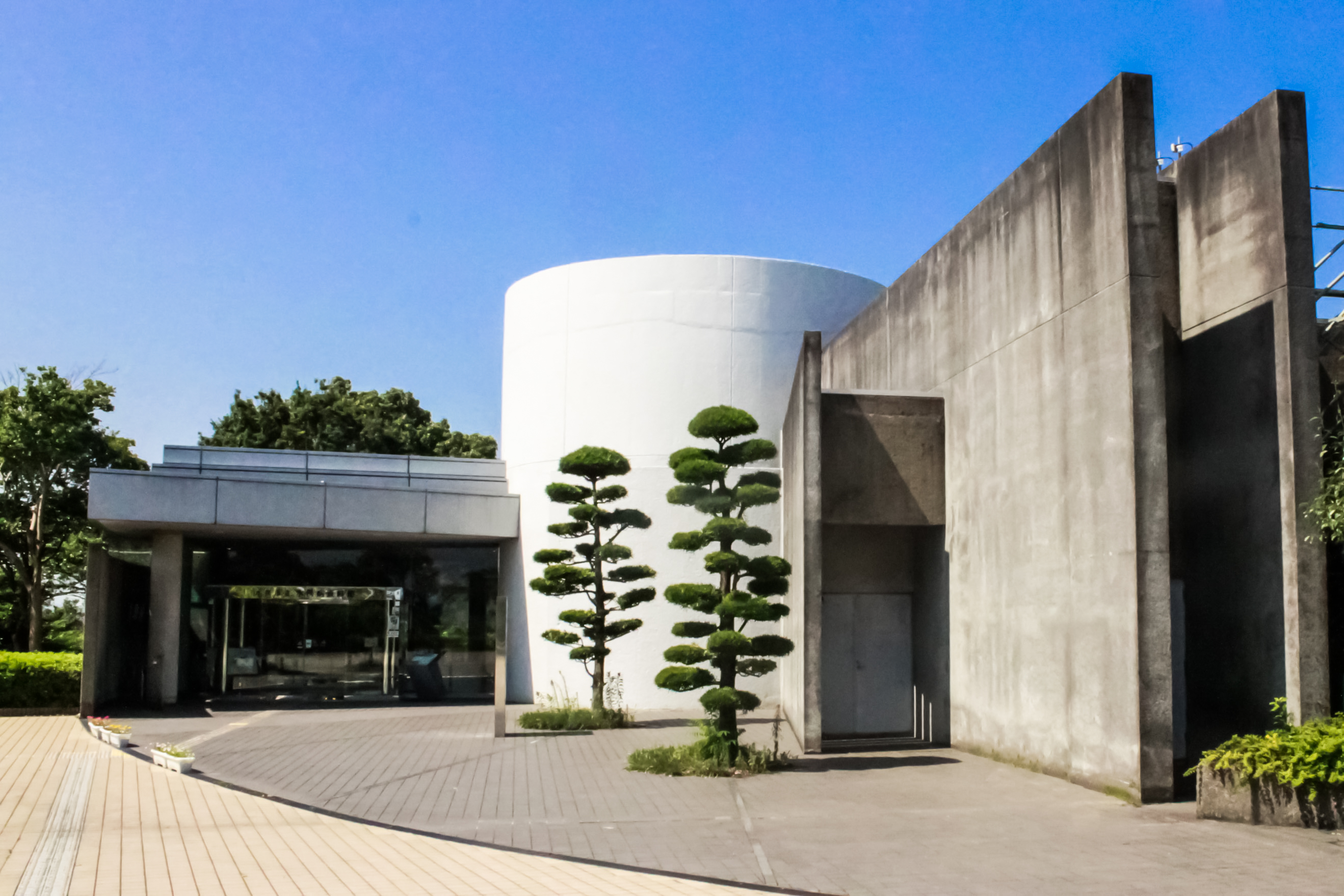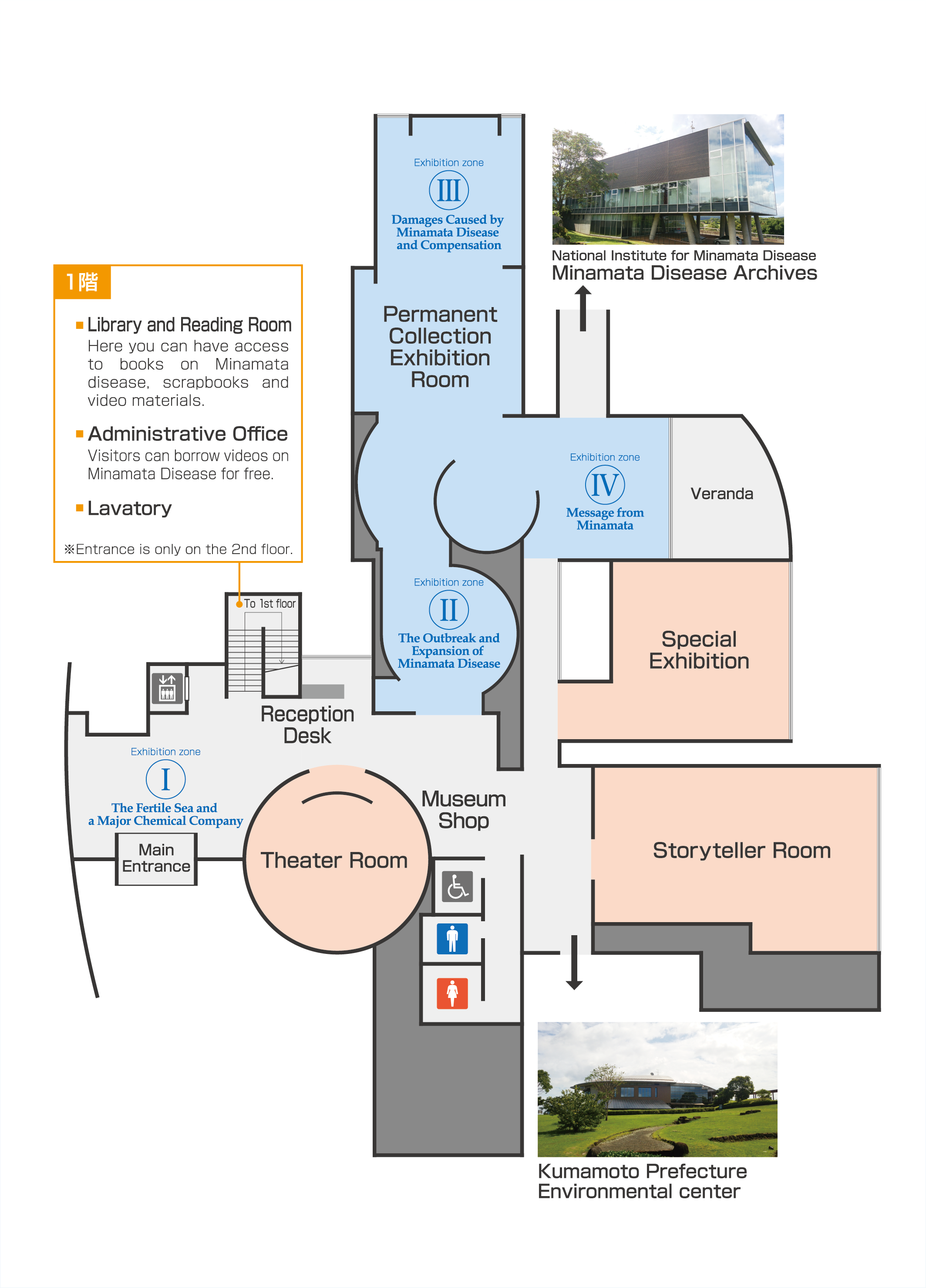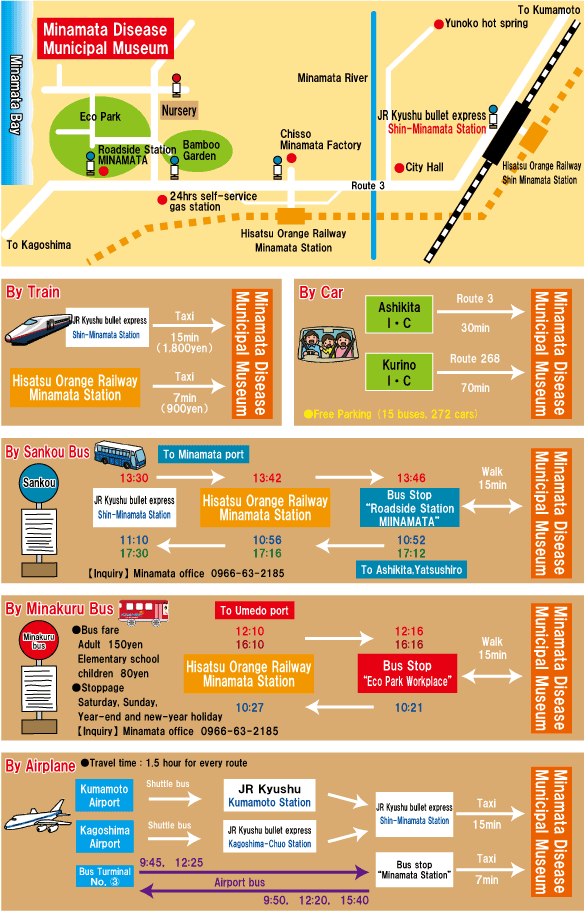Since its opening in January 1993, about 700,000 people from within Japan and from over 175 foreign countries visit us to learn about pollution, the environment and human rights.


Since October in 1994, Minamata disease victims and their family started to act as “Kataribe”, storytellers, and share their experiences. *Appointment necessary

There are free parking spaces for 15 buses and 272 regular cars.

■Please refrain from eating or drinking within the Museum except when it
is raining.
■Photography in Minamata Disease Municipal Museum
■Pets are not to be brought into or through this building.
■Smoking is allowed only in a designated area.
■Please take all garbage back home with you.

1st Floor: Library and Reading room, Administrative office, Rest room
-----------------------------------------------------
2nd Floor: Theater room(wide screen of 150 in.), Special Exhibition room,
Storyteller room
-----------------------------------------------------
●Visitors can tour the Museum freely.
●Videos through TV monitors and video theater are in English and Japanese.
| 5,700 books 87,000 newspaper articles 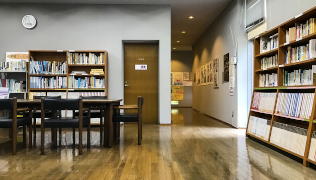 |


Theater room
150-inch screen
(Japanese,English,Mandarin,
Taiwanese, and Korean)
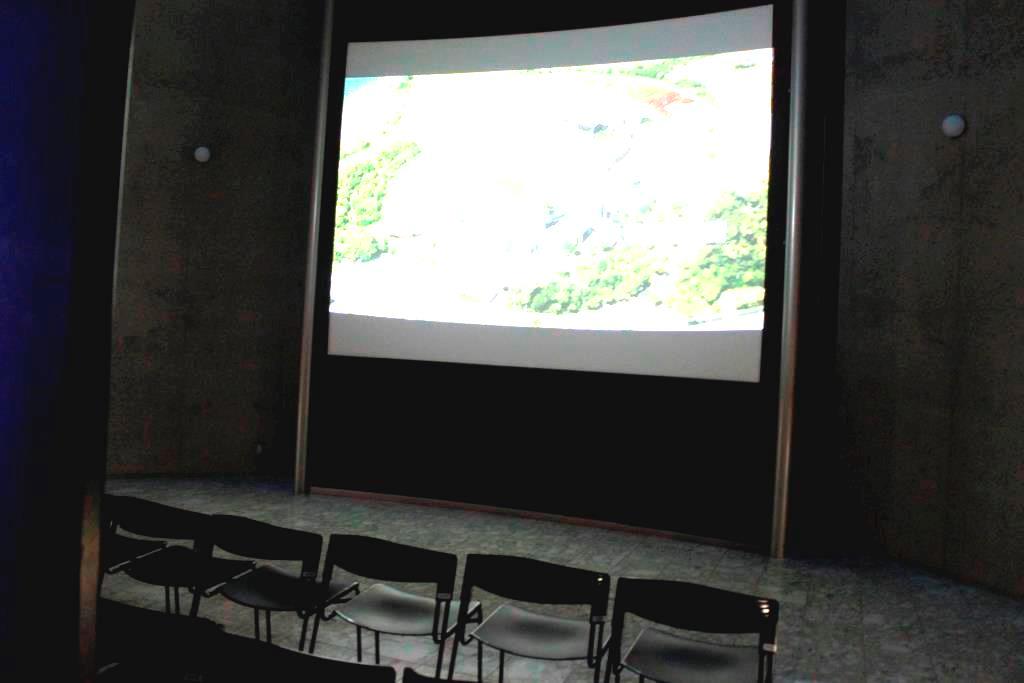
Special exhibition room

Storyteller room
(130 capacity)

From 1997 to 2005, the Minamata Disease Victims Memorial Service is held annually on the Memorial Site.
■Minamata Memorial is located on Museum's property.
 |
【Outline 】 ・Ground area (3,000㎡) This is a place where visitors can pause for a while to gather their thoughts, contemplate the past and the future, and pray for a fresh start for tomorrow. |
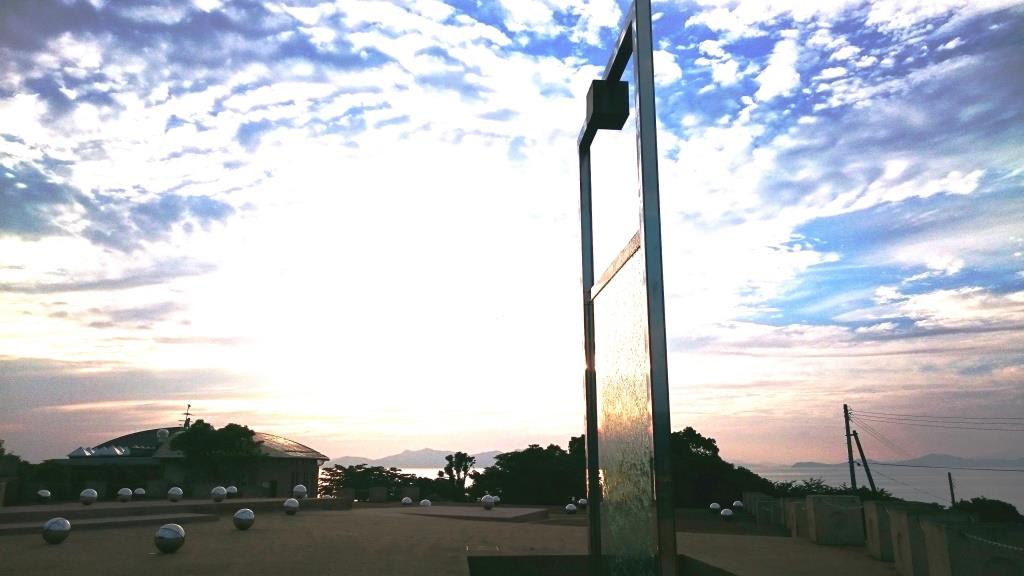 |
【Prayer fountain(Glass fountain】 Looking through the clear water falling along the glass surface of the Prayer fountain, won't you turn your thoughts towards the past, the present, and the future? <Height 5m, width 3m> |
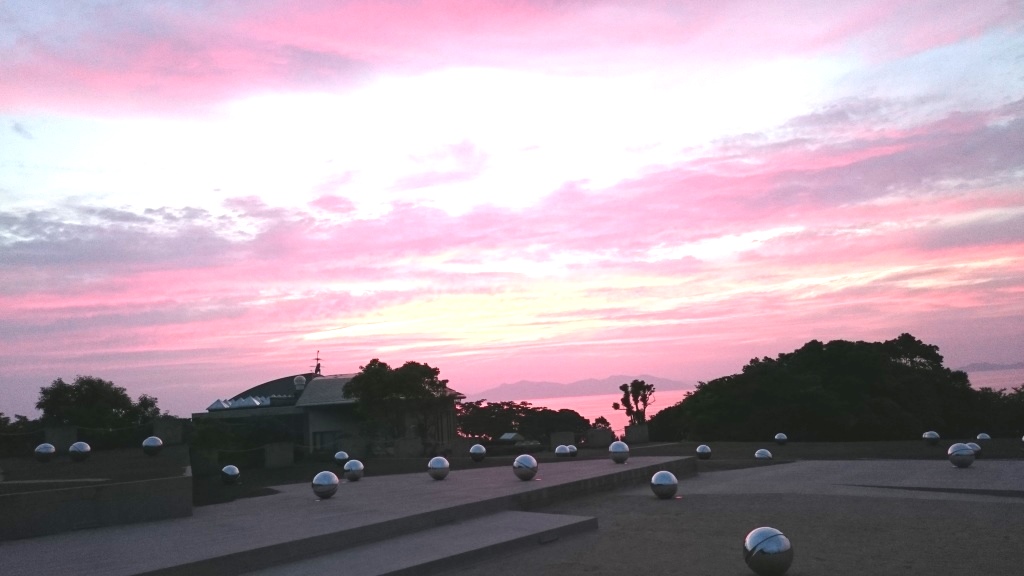 |
【Terraces】 Terraces of differing levels form the entirety of Minamata Memorial. The color and texture of the terraces recalls a sandy beach. |
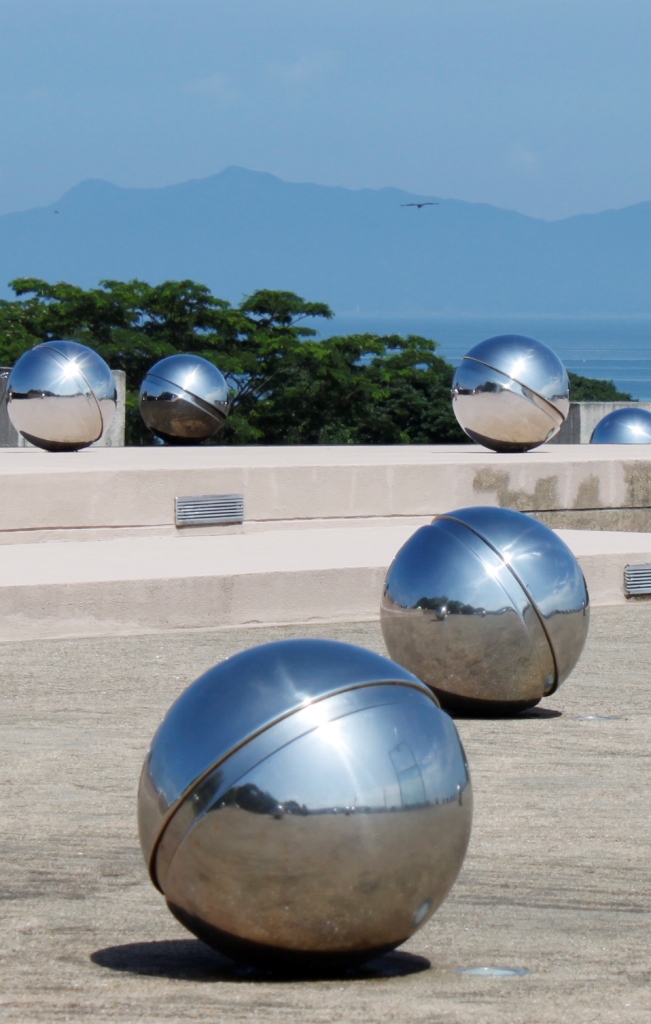 |
【Memorial Spheres】 The stainless steel spheres scattered over the terraces appear something like the reflection of the souls of those sacrificed, and the reflection of the Shiraui's fishermen's lights. <Diameter 40cm; There are 108 pieces of spheres.> |
|
A design by Mr. Giuseppe Barone, an Italian designer, was chosen by Mr.Arata Isozaki, an architect, for the Minamata Memorial international competition held in 1995. There were 454 entries from within Japan and from 18 foreign countries. |
|
| ◆Message from the designer, Mr. Giuseppe Barone◆ A privileged place or a hierarchy of spaces, signs and symbols does not definitely exist, but the whole plan stimulates the individual to take advantage of it by simply walking, resting, thinking or remembering. The intention is to realize a “monument” that does not crush man, but that is a reflection the way he feels. |
|











